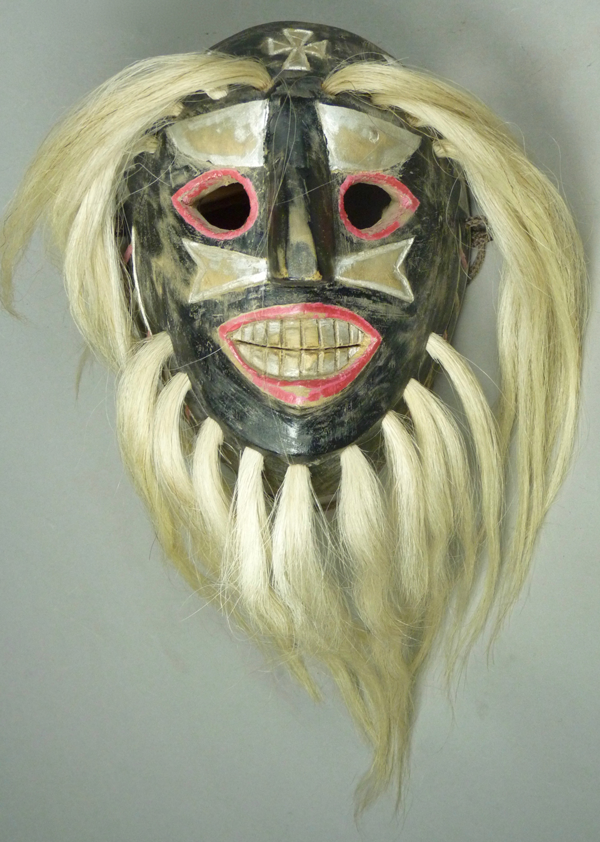When James Griffith was collecting Pascola masks that had been created by Rio Mayo carvers, back in 1965, he found it particularly easy to build a representative collection of masks by one of the local carvers, Alcario Camea, but he had marked difficulty when he attempted to buy danced masks by Silvestre Lopez. As I noted in last week’s post, masks carved by Sylvestre were perceived as superior to most of the others in terms of desirable design features. In contrast, Alcario’s masks were carefully carved, and perhaps brilliant in their eccentricity, but these idiosyncratic design features apparently went in and out of fashion, over time. One might imagine that these shifts in taste reflect some degree of secularization of the Pascola’s role, but I don’t believe that there is much of a published literature in this area. However, Tom Kolaz has been particularly interested in tracking these changing Pascola mask fashions on the Rio Mayo, and I look forward to a time when he will make his observations more widely available.
In April 1995, I briefly owned an excellent mask by Alcario, with typical features. I immediately traded it for another mask that I coveted. I was later able to photograph this mask in 2011, after it had entered the collection of Jerry Collings. By now this mask has probably moved on to the collection of Gallery West, in Tucson Arizona. I have no photos of other masks by Alcario to offer you, apart from those in Griffith’s Masters Thesis of 1967, which you can access through the link that follows. Here is a photo of the mask that I briefly owned in 1995, to get us started. I had purchased that mask from Mark Bahti, of Tucson Arizona, who reported that his father, Tom Bahti had collected the mask several decades earlier. In other words, it probably dates to the same period as Jim Griffith’s research.
In the frontal view one sees a number of features that appear on almost every one of Alcario’s masks. These include:
1. the typical cross (which Griffith dubbed the “Alcario cross);
2. almond shaped eyes that are slanted downward at their outer corners;
3. oversized crescent shaped wedges under the eyes (almost as if a second mustache);
4. a broad drooping mustache between the bottom of the nose and the upper lip;
5. open teeth;
6. a ring of hair bundles around the face;
7. a slab-like nose with “ski-jump” contour and a blunt end.
8. and the use of boldly contrasting colors, noted Griffith.










